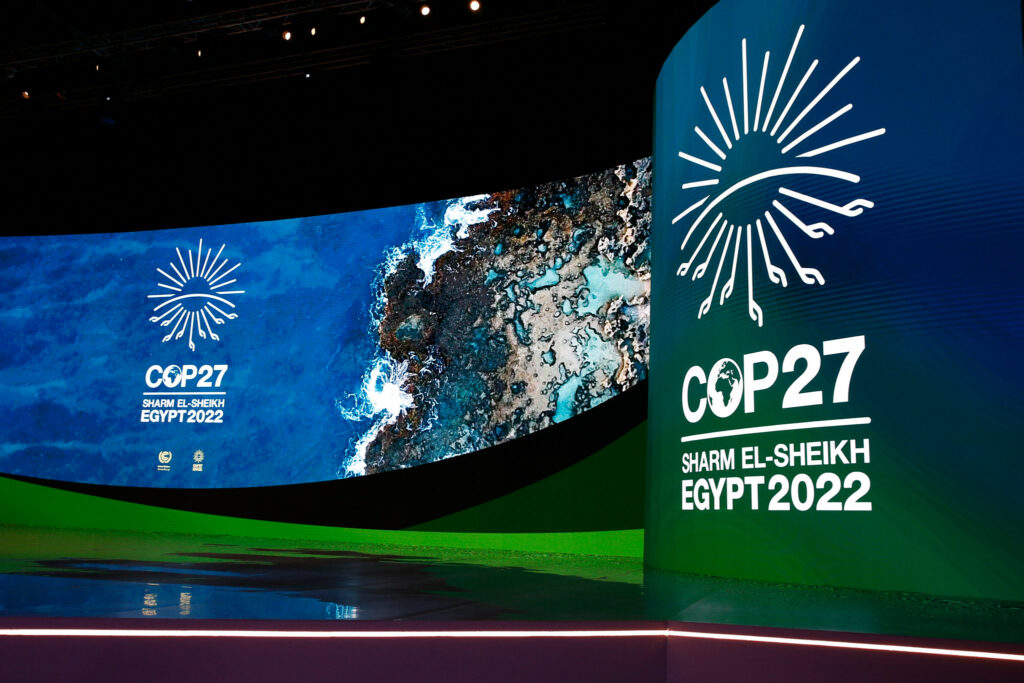By Deanna Alderson, Climate Writer

The United Nations Climate Change Conference, the COP27, ended last month without a global commitment to phase out fossil fuels. Frustratingly, the deal reached at the end of the two-week summit did not attempt to reduce greenhouse gas emissions beyond the modest pledges made in Glasgow last year. The new agreement also made reference to “low-emissions energy,” which raised fears that some governments are looking to expand natural gas operations instead of transitioning to renewable energy.
This certainly wasn’t the bold, immediate action needed to drastically reduce global emissions, but there were a few encouraging developments. The conference finally acknowledged the disproportionate effect of climate change on developing countries with the creation of a loss and damage fund. The fund will provide financial assistance to vulnerable countries facing extreme weather events, rising sea levels and crop failures. UN Secretary-General Antonio Guterres called it “an important step towards justice.”
There was also welcome progress on deforestation, with 26 countries and the European Union joining together to launch the Forest and Climate Leaders’ Partnership. The group pledged to halt and reverse forest loss by 2030 and committed over $4.5 billion in public and private funds to the cause. Though Brazil was noticeably absent from the partnership, Brazil’s new president-elect, Lula, declared that his administration will do “whatever it takes to have zero deforestation.”

I had the good fortune to speak about this year’s conference with climate activist Monica Nelson, a PhD student at Scripps Institution of Oceanography who attended the COP with UCSD’s delegation. One of the bright spots of the conference for Ms. Nelson was the push to reimagine the global finance system: “There’s been an effort led by Mia Mottley, the Prime Minister of Barbados, to re-envision the IMF and World Bank and change how these institutions are working to serve the problems of today,” Ms. Nelson said. “It’s so important to have movement towards getting more money to countries and communities that are feeling the impacts of climate change, which are predominately not caused by them. It’s hard to say with confidence if this is the break that we need, but at least there’s some progress on that front.”
Many of the discussions at the COP still centered around keeping global temperature rise below 1.5o C, a target that most scientists agree is already out of reach. The consistent focus on the target frustrated Ms. Nelson, who “felt like all the rhetoric was obscuring the fact that we are doing really poorly trying to meet that target, and pretending that the target is still alive is a lack of acknowledgement of our failures.”
Over 600 fossil fuel lobbyists attended the conference, and there were plenty of corporate logos on display around the venue. Ms. Nelson felt the effects of this large corporate presence in the conference’s Green Zone, a usually vibrant, informal area outside of the negotiation space that should be buzzing with activists and organizers. Instead, the zone “was really dead this year and part of that was a massive corporate takeover and part of it was that protests are illegal in Egypt,” Ms. Nelson said, adding “Normally, the Green Zone is this place of lively protest and attention gathering because there’s not always enough happening in the negation space.”
There were some protests permitted inside the Blue Zone, the zone reserved for formal negotiations that is under the jurisdiction of the UN. Ms. Nelson noted that “this was the first time the UN allowed sanctioned protests inside the venue,” as it was not safe to protest outside. Next year’s COP will be held in Dubai, where protest is also effectively banned, and it’s likely the UN will again have to consider allowing protests inside the Blue Zone.
Next year’s conference will also provide more information on the loss and damage fund. A group of representatives from 24 countries will spend the next year figuring out the details as to how the fund will work, and it’s expected to become operational at COP28. While a year seems like a long time to wait, given the usual glacial pace of climate negotiations, Ms. Nelson is optimistic about the timeline: “Getting something done in a two-year timeline is pretty fast in the general scheme of COP negotiations. Having something finalized by next year is earlier than I had expected.”
Ms. Nelson shared this parting thought on her time at the conference: “Being on the ground, I was so overwhelmed by how many people were there, by how much was happening. I thought, wow, we have a lot of people trying to solve this problem, people who can afford to come to COP and have the organizational power to get through the delegation process—and there’s a whole lot more people that these people represent—and that feels really powerful. The flip side of that is that even with all these people, we aren’t making fast enough progress.”
SD350 would like to extend a hearty thank-you to Monica Nelson for her generous participation in this article.
